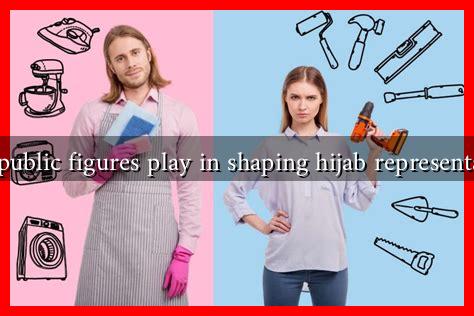-
Table of Contents
What Role Do Public Figures Play in Shaping Hijab Representation in Media
The hijab, a traditional headscarf worn by many Muslim women, has been a subject of both admiration and controversy in media representations. Public figures, including celebrities, politicians, and influencers, play a crucial role in shaping how the hijab is perceived in society. Their influence can either reinforce stereotypes or promote a more nuanced understanding of this cultural symbol. This article explores the multifaceted role of public figures in hijab representation in media, highlighting key examples and the impact of their actions.
The Power of Representation
Representation in media is vital for shaping public perception and understanding of different cultures and practices. Public figures have the platform to influence narratives surrounding the hijab, which can lead to either positive or negative outcomes. The following points illustrate the significance of representation:
- Visibility: Public figures who wear the hijab increase visibility for Muslim women, challenging the notion that the hijab is a symbol of oppression.
- Normalization: When celebrities and influencers wear the hijab, it normalizes the practice and encourages acceptance in broader society.
- Empowerment: Public figures can empower Muslim women by showcasing the hijab as a choice rather than an obligation, promoting agency and individuality.
Case Studies of Influential Public Figures
Several public figures have made significant contributions to the representation of the hijab in media. Their actions and statements have sparked conversations and shifted perceptions.
1. Ibtihaj Muhammad
Ibtihaj Muhammad, an Olympic fencer and the first American athlete to compete in the Olympics wearing a hijab, has become a powerful symbol of representation. Her participation in the 2016 Rio Olympics not only showcased her athletic prowess but also highlighted the diversity within sports. Muhammad’s visibility has inspired many young Muslim girls to pursue sports, breaking down barriers and challenging stereotypes.
2. Halima Aden
Model Halima Aden made headlines as the first hijab-wearing model to sign with major modeling agencies. Her presence on runways and in fashion campaigns has redefined beauty standards and opened doors for other hijab-wearing women in the fashion industry. Aden’s success emphasizes that the hijab can coexist with modernity and fashion, promoting a more inclusive representation.
3. Linda Sarsour
Activist Linda Sarsour has used her platform to advocate for Muslim rights and social justice. By wearing her hijab proudly during protests and public appearances, Sarsour challenges the stigma associated with the hijab and emphasizes its significance as a symbol of identity and resistance. Her activism has sparked discussions about the intersectionality of race, gender, and religion in media narratives.
The Impact of Social Media
Social media has transformed the way public figures can influence hijab representation. Platforms like Instagram, Twitter, and TikTok allow for direct engagement with audiences, enabling public figures to share their experiences and challenge misconceptions. Some notable impacts include:
- Community Building: Public figures can create communities that celebrate hijab-wearing women, fostering a sense of belonging and support.
- Counter-Narratives: Social media allows for the dissemination of counter-narratives that challenge negative stereotypes and promote positive stories about hijab-wearing women.
- Global Reach: Public figures can reach a global audience, spreading awareness and understanding of hijab culture beyond local contexts.
Challenges and Criticisms
Despite the positive contributions of public figures, challenges remain. Some criticisms include:
- Tokenism: The representation of hijab-wearing women can sometimes be superficial, reducing their identity to a mere trend rather than acknowledging their cultural significance.
- Commercialization: The fashion industry’s appropriation of the hijab for profit can dilute its meaning and alienate those who wear it for religious reasons.
- Backlash: Public figures who embrace the hijab often face backlash from both conservative and liberal circles, complicating their role as representatives.
Conclusion
Public figures play a pivotal role in shaping hijab representation in media, influencing societal perceptions and fostering understanding. Through visibility, empowerment, and advocacy, they can challenge stereotypes and promote a more inclusive narrative. However, it is essential to remain vigilant against tokenism and commercialization that can undermine the cultural significance of the hijab. As society continues to evolve, the contributions of public figures will remain crucial in shaping a more nuanced understanding of hijab-wearing women in media.
For further reading on the impact of representation in media, you can explore resources from Media Diversity Institute.

